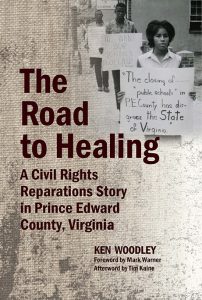Seventy years ago, sixteen-year-old Barbara Johns led a walk-out at R. R. Moton High School in Farmville, Virginia, in protest of Jim Crow segregation, specifically the so-called separate-but-equal education policies which had been the law in the South since Plessy v. Ferguson in 1896. The school Johns attended indeed was separate, but it was in no way equal to the White public schools in the same county. NAACP lawyers Oliver Hill and Spottswood Robinson supported the walk-out students by filing a federal lawsuit against the Prince Edward County school board. The original suit failed, but its claims were folded into Brown v. Board of Education, the landmark 1954 ruling in which the U.S. Supreme Court overturned Plessy and declared school segregation to be unconstitutional. Barbara Johns’s reward for this victory was harassment by the Ku Klux Klan and the closure for several years of all public schools in Prince Edward County as local White officials did all they could to avoid and delay desegregation.
 Half a century later, the activism of Johns and the other walk-out students had been largely forgotten before journalist Ken Woodley discovered the background story of school closures in Prince Edward County while working for the Farmville Herald, the local newspaper in his and Johns’s hometown. Woodley told the resurrected story in articles and editorials and led a campaign for reparations for the years of lost education. In the end, Woodley took the campaign all the way to the governor’s office and secured both a public apology and scholarships for those affected by the Prince Edward County school closures. Woodley’s moving and inspiring memoir, The Road to Healing, shares the story of his and others’ efforts to make right the societal ills in his small Virginia town. The tale reminds readers that even small gestures can go a long way toward repairing the social fabric of our country.
Half a century later, the activism of Johns and the other walk-out students had been largely forgotten before journalist Ken Woodley discovered the background story of school closures in Prince Edward County while working for the Farmville Herald, the local newspaper in his and Johns’s hometown. Woodley told the resurrected story in articles and editorials and led a campaign for reparations for the years of lost education. In the end, Woodley took the campaign all the way to the governor’s office and secured both a public apology and scholarships for those affected by the Prince Edward County school closures. Woodley’s moving and inspiring memoir, The Road to Healing, shares the story of his and others’ efforts to make right the societal ills in his small Virginia town. The tale reminds readers that even small gestures can go a long way toward repairing the social fabric of our country.
